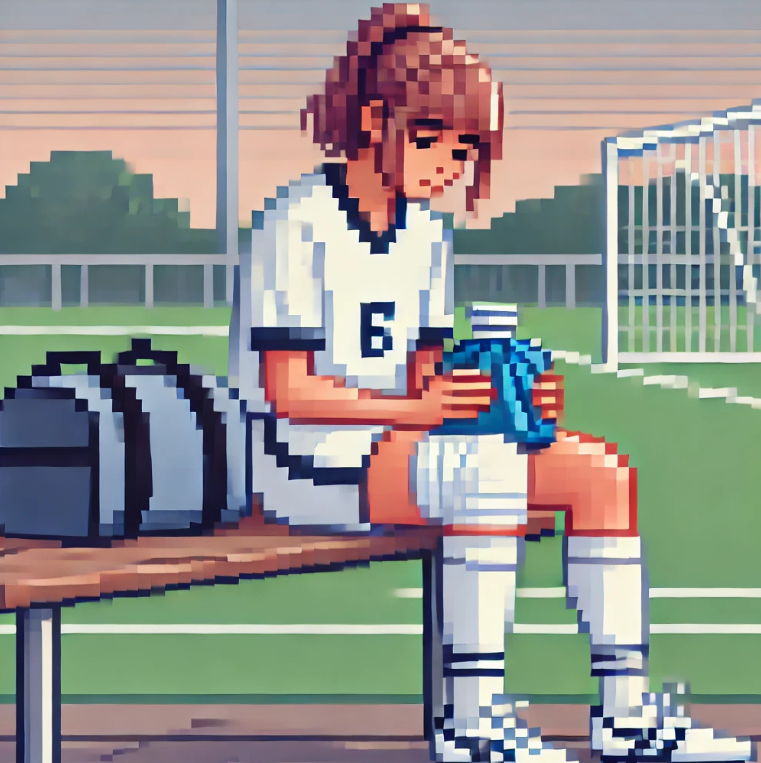
Why Injuries Hold Soccer Players Back More Than We Think
For every coach or player out there, you know the moment—the heart-stopping second when a player hits the ground and grabs their knee. The tension on the field is palpable, not just for the pain but because everyone knows what could be next. Injuries can be a game-changer, not just for the season but for a player’s entire career. But what if I told you that the impact of those injuries goes far beyond the initial recovery? New research suggests that even after the body heals, players with a history of injury may face hidden challenges that affect their performance on the field.
The Hidden Struggles Behind Injury Recovery
Soccer is a sport of constant movement, rapid decisions, and quick changes in direction. Every time a player steps on the field, they’re interacting with other players, reacting to what’s happening around them. When we think of soccer injuries—especially those devastating ACL tears or hamstring strains—most of us focus on physical healing. But what if we’re missing a crucial piece of the puzzle?
Researchers are now shedding light on how previous injuries affect a player’s ability to synchronize with teammates and opponents. This isn’t just about muscle strength or endurance; it’s about something deeper: the player’s ability to anticipate and react in a high-pressure, fast-moving game.
When Injury Affects the Team Dynamic
Imagine two players moving toward each other on a soccer field, each trying to avoid a collision. In a perfectly functioning team, players communicate non-verbally, reading each other’s movements, adjusting, and reacting almost instinctively. It’s a beautiful dance—until someone breaks the rhythm.
The study in question used a unique agility-based task to observe how well players, both with and without a history of injury, coordinate their movements in these scenarios. The results? Those who had been injured were far less likely to recover their synchronization after being thrown off balance by a surprise disruption. Essentially, when things went wrong, previously injured players had a much harder time getting back in step.
Why does this matter? In soccer, where split-second decisions make or break a game, hesitation or failure to synchronize with a teammate can lead to missed opportunities—or worse, new injuries.
The Psychology of Fear and Confidence
It’s not just the body that struggles after an injury. The mind plays a critical role, too. Players with a history of injury often report feeling less confident, more fearful of re-injury, and less capable of handling high-pressure situations. This psychological toll is massive, and it plays directly into how well they can function as part of a team.
Think about it: A player who isn’t sure about their ability to push off their leg or make a sharp turn will hesitate. That split second of hesitation disrupts the flow of the game, making them more of a follower in the team dynamic than a leader.
In the study, players with a history of injury were more likely to fall into a “follower” role in coordinated tasks, letting their teammates take the lead. This isn’t necessarily a bad thing, but in a sport where quick, confident decisions are crucial, being a follower too often can make a player—and by extension, the entire team—less effective.
How Coaches Can Use This Knowledge
Now, here’s where the real-world implications come in. For coaches and trainers, it’s easy to focus on physical rehab after an injury. But this study suggests that psychological readiness and team dynamics need just as much attention. Players might be cleared physically, but if they’re not mentally ready to face the fast-paced, unpredictable nature of soccer, they’re not truly ready to return.
Here’s what coaches and trainers can do:
- Incorporate Team-Based Drills: Post-injury rehab should include exercises that involve not just individual recovery but also team coordination drills. This could be as simple as requiring players to react to each other’s movements during agility training.
- Focus on Mental Toughness: Confidence and fear of re-injury are real barriers. Incorporate psychological training into rehab programs. Help players rebuild not just their bodies but also their belief in their ability to perform at a high level.
- Monitor Leadership in Drills: Take note of which players take the lead in team drills and which ones hang back. If previously injured players are consistently in the follower role, that might be a sign that they need more time—mentally, if not physically—before they’re ready to fully return to play.
- Prepare for Unpredictability: Soccer is chaotic, and players need to be ready for anything. Create drills that mimic the unpredictability of a real game, with sudden changes in direction or unexpected disruptions. This helps players practice adapting on the fly, building both confidence and coordination.
Applications for Coaches and Player Development
So how can you take the findings from this study and apply them to your coaching or training regimen?
- Rehabilitation Should Mimic Real-Game Scenarios: When rehabbing a player, it’s not enough to focus on physical recovery in isolation. Build in drills that simulate the unpredictability of a real soccer match—this can help players develop the mental resilience to recover from disruptions during the game.
- Rebuild Confidence Gradually: Fear of re-injury can hold players back from fully participating in team dynamics. Incorporating confidence-building exercises and gradual exposure to game-like situations can ease players back into their roles as leaders on the field.
- Team Drills Over Individual Training: Soccer is a team sport, and your training should reflect that. Make sure that even in recovery, players are practicing in a team environment where they can work on synchronizing with their teammates.
By incorporating these strategies, coaches can help previously injured players not only recover physically but also mentally and emotionally, allowing them to regain their position as integral parts of the team dynamic.
Conclusion: Recovery Is About More Than Just Physical Healing
Injuries may seem like temporary setbacks, but this research shows they can have long-lasting effects on a player’s ability to perform as part of a team. Coaches, trainers, and players need to recognize that returning to the field isn’t just about strength and endurance—it’s about regaining the ability to sync with the unpredictable nature of the game.
By focusing on both the psychological and physical aspects of recovery, coaches can help their players come back stronger and more resilient than ever.
Be Part of Soccer’s Scientific Revolution: “Discover the unseen facets of soccer with ‘This Week in Soccer’.
Our newsletter brings you closer to the game’s strategic and scientific dimensions, with content tailored for coaches, educators, and fans alike. Utilizing advanced AI tools, we make complex soccer science accessible and engaging. Don’t just watch soccer, understand it. Subscribe to our newsletter now!



